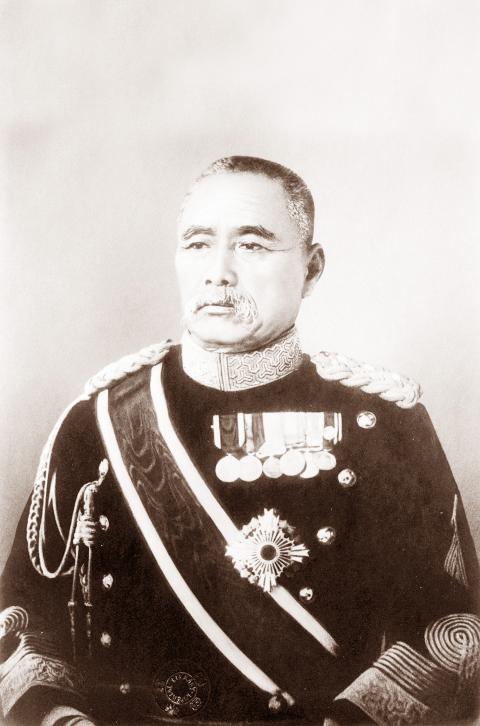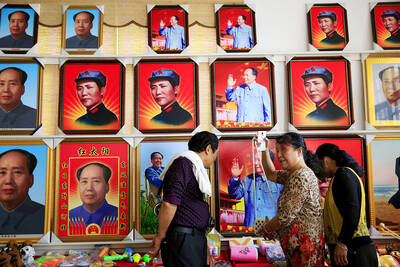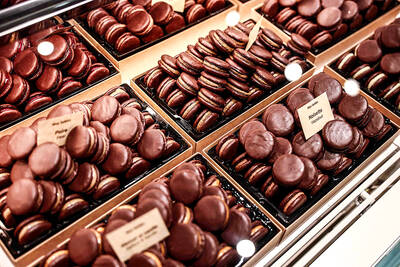Taiwan in Time: July 25 to July 31
In late July of 1914, a fierce, two-month battle was nearing its end in the mountains of present-day Hualien County (花蓮).
Sakuma Samata, then-governor general of Taiwan who personally participated in the battle, had fallen off a cliff a month earlier and was in critical condition — but the outcome was already decided, as the main resistance had surrendered and given up their weapons a few weeks earlier.

Photo courtesy of Wikimedia Commons
Soon, the Japanese would finally effectively control Taiwan in its entirety, the process taking more than two decades as it spent the first decade dealing with armed Han uprisings.
With more than 10,000 men on the Japanese side, this would be the largest and final battle of Sakuma’s Aboriginal pacification campaign.
The Japanese took over Taiwan in 1895, but up until 1910, they still were not able to entirely control the mountainous Aboriginal areas. The government mostly isolated the Aborigines in the mountains with “guard lines,” which consisted of wooden or electric fences (and sometimes landmines) with guard stations. These lines were originally defensive in nature, but eventually they became a means of cutting off and encircling the tribes as they were built deeper and deeper into Aboriginal territory.

Photo courtesy of Wikimedia Commons
The Truku had caused the colonial government trouble as early as 1896 and was reportedly one of the fiercest tribes to resist Japanese rule. The last major incident took place just four months after Sakuma took office in August 1906, when about 30 Japanese were killed, including the governor of Karenko Subprefecture (the eastern part of today’s Hualien County).
Sakuma had dealt with the Aborigines as early as 1874 during the Mudan Incident, when Japan sent a punitive expedition to punish Paiwan tribesmen who had killed 54 shipwrecked Ryukuan sailors. He reportedly earned the epithet “Demon Sakuma” due to his fierceness during this battle and was the one who killed the Mudan Village chief.
In 1907, Sakuma announced his first five-year plan to “govern the savages.” For the Aborigines in the Truku area, this entailed setting up new guard lines in the mountains to further isolate the tribes, and then finally subjugating them through military action if necessary. He also had ships patrol the coast to cut them off from the other side.
Some Aborigines surrendered and allowed the enclosures, either intimidated by force or enticed by governmental promises — but others decided to fight, leading to several bloody incidents. Sakuma decided that a new direction was needed.
In 1910, he received massive funding from the Japanese government for a new five-year plan, taking on a more aggressive, militaristic approach with armed police, especially in the northern part of Taiwan. They continued to push the guard lines forward, with a major goal of confiscating the weapons of the Aborigines, leaving them with no means to resist. Most estimates show that more than 20,000 guns were collected during this time.
There were several groups that were classified as “vicious savages,” and therefore, Sakuma required military expeditions. After campaigns against other tribes in 1910, 1911 and 1913, Sakuma saved the Truku for last.
Starting from 1913, Sakuma sent scouts to survey the Truku terrain, and also trained Truku language translators. In late May of 1914, the 69-year-old personally led more than 10,000 police, soldiers and other personnel toward Truku territory. Most records show that the Truku had at most 3,000 fighting men.
This was not a straight-up extermination campaign, as the troops promised the Aborigines they wouldn’t be harmed if they handed over all their guns and ammunition — and many did so. After two months of battle, the fighting gradually resided and the official surrender ceremony was held on Aug. 13.
At the end of the war, the Japanese had only lost about 150 men, of which 76 were killed in battle, according to official numbers from the Governor-General’s Office. There are no numbers on how many Aborigines were killed.
Afterward, the Japanese sent personnel in to the mountains to build roads and bridges, set up telephone wires as well as round up the remaining ammunition and people who went into hiding. They also built police and patrol facilities and stationed troops in the area.
Sakuma recovered from his injuries and headed back to Japan in September to report to the emperor the completion of his mission. He remained as governor-general until April 1915.
Taiwan in Time, a column about Taiwan’s history that is published every Sunday, spotlights important or interesting events around the nation that have anniversaries this week.

Taiwan can often feel woefully behind on global trends, from fashion to food, and influences can sometimes feel like the last on the metaphorical bandwagon. In the West, suddenly every burger is being smashed and honey has become “hot” and we’re all drinking orange wine. But it took a good while for a smash burger in Taipei to come across my radar. For the uninitiated, a smash burger is, well, a normal burger patty but smashed flat. Originally, I didn’t understand. Surely the best part of a burger is the thick patty with all the juiciness of the beef, the

This year’s Miss Universe in Thailand has been marred by ugly drama, with allegations of an insult to a beauty queen’s intellect, a walkout by pageant contestants and a tearful tantrum by the host. More than 120 women from across the world have gathered in Thailand, vying to be crowned Miss Universe in a contest considered one of the “big four” of global beauty pageants. But the runup has been dominated by the off-stage antics of the coiffed contestants and their Thai hosts, escalating into a feminist firestorm drawing the attention of Mexico’s president. On Tuesday, Mexican delegate Fatima Bosch staged a

The ultimate goal of the Chinese Communist Party (CCP) is the total and overwhelming domination of everything within the sphere of what it considers China and deems as theirs. All decision-making by the CCP must be understood through that lens. Any decision made is to entrench — or ideally expand that power. They are fiercely hostile to anything that weakens or compromises their control of “China.” By design, they will stop at nothing to ensure that there is no distinction between the CCP and the Chinese nation, people, culture, civilization, religion, economy, property, military or government — they are all subsidiary

Would you eat lab-grown chocolate? I requested a sample from California Cultured, a Sacramento-based company. Its chocolate, not yet commercially available, is made with techniques that have previously been used to synthesize other bioactive products like certain plant-derived pharmaceuticals for commercial sale. A few days later, it arrives. The morsel, barely bigger than a coffee bean, is supposed to be the flavor equivalent of a 70 percent to 80 percent dark chocolate. I tear open its sealed packet and a chocolatey aroma escapes — so far, so good. I pop it in my mouth. Slightly waxy and distinctly bitter, it boasts those bright,